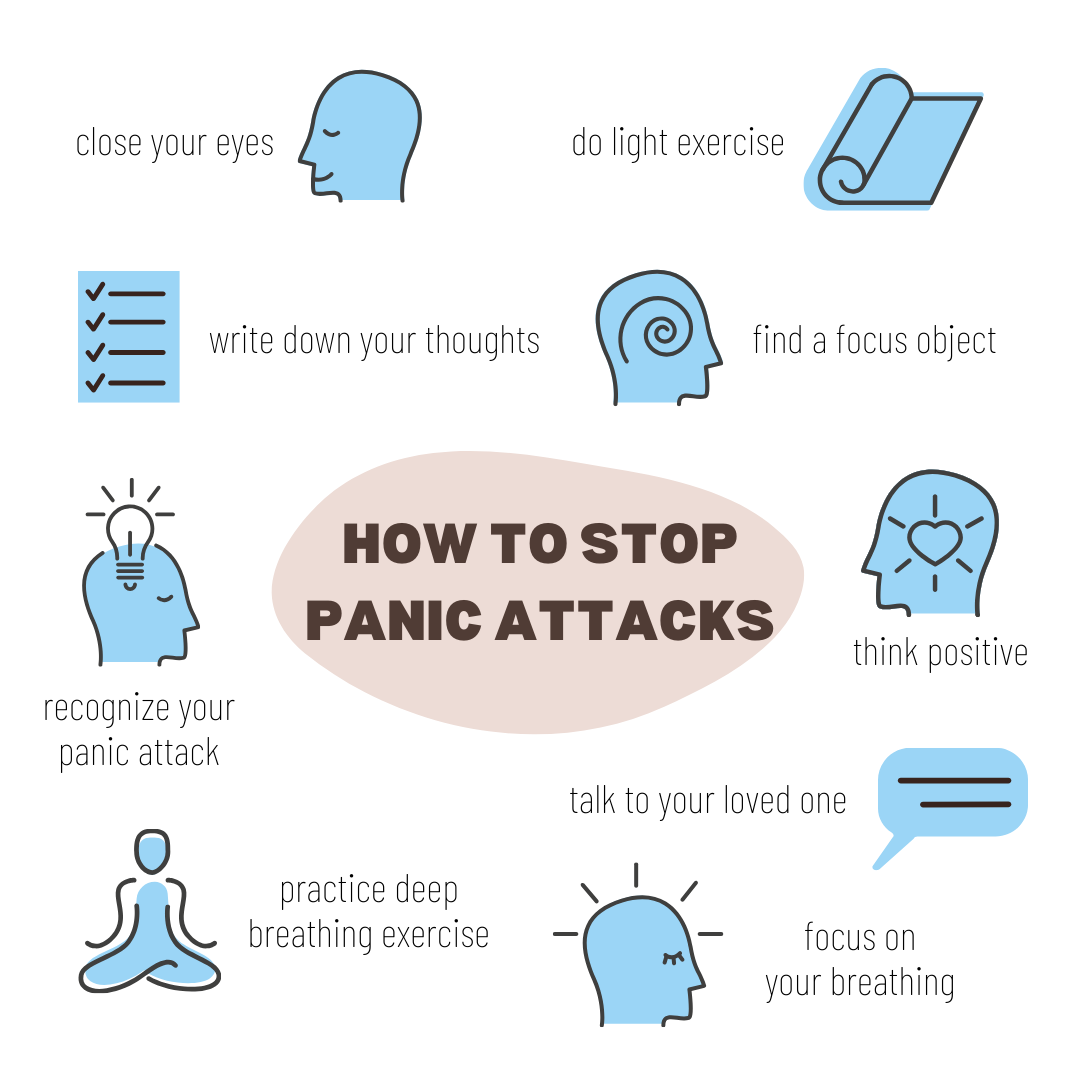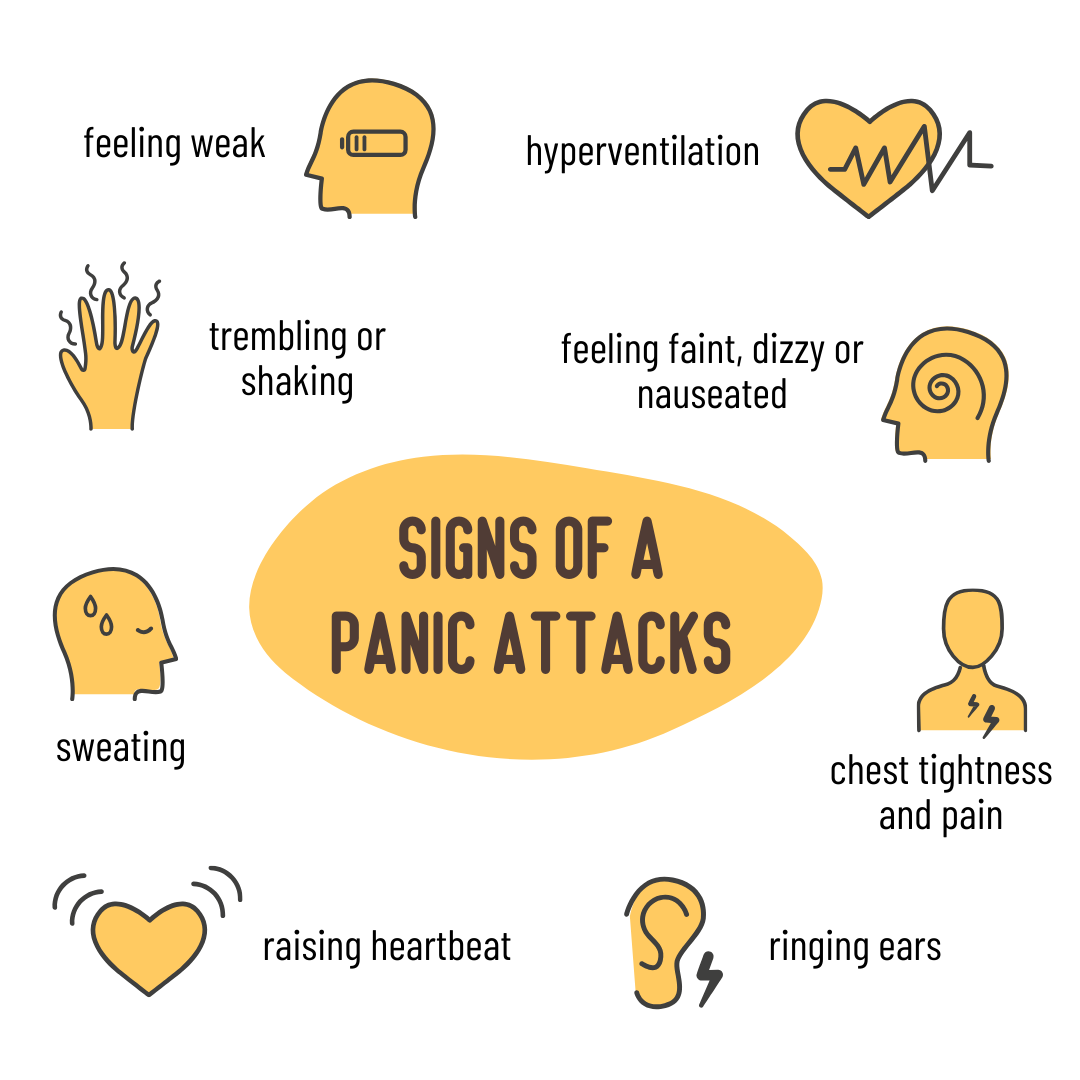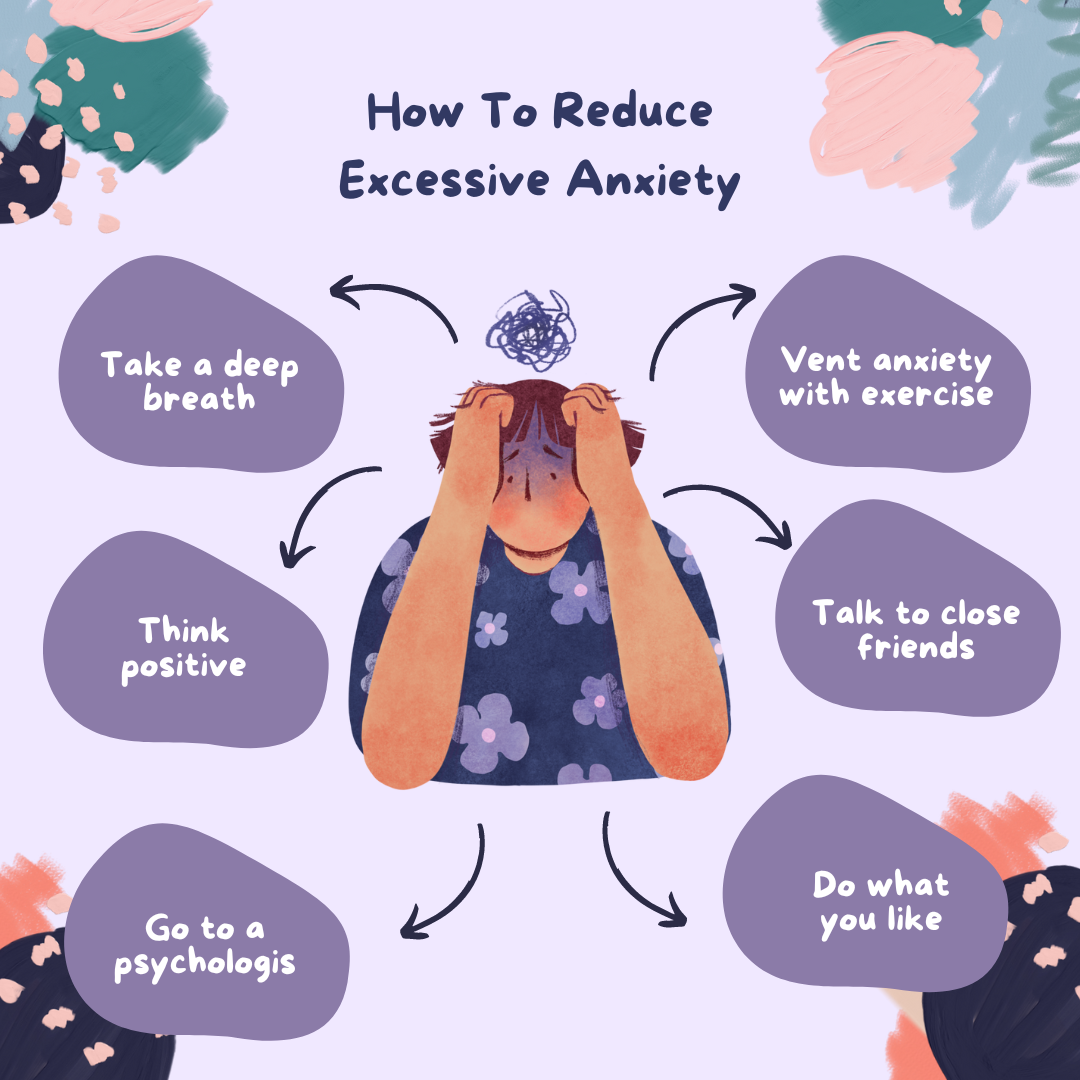Panic disorder causes unexpected panic attacks. Anxiety attacks are followed by physical symptoms like a racing heart, shortness of breath, and a sense of impending doom. To show empathy and support for those with this debilitating illness, you must understand its nuances. This condition can affect anyone, regardless of age, gender, or background. Panic attacks are sudden, intense bouts of fear and anxiety that can cause a variety of physical and emotional symptoms. These episodes, often linked to panic disorder, can disrupt a person's daily life and make them feel vulnerable and afraid of another attack. Individuals struggling with panic attacks must understand their causes, symptoms, and treatments.
Anxiety and panic are normal, but sudden panic attacks may indicate panic disorder. Recurrent unexpected panic attacks distinguish panic disorder from other anxiety disorders, according to the Diagnostic and Statistical Manual of Mental Disorders. Panic attacks are scary and unsettling. A rapid heart rate, shortness of breath, and a sense of impending doom are symptoms. Without a known cause, these attacks are unpredictable and difficult to predict. People may avoid certain situations or places to avoid another attack, which can lead to agoraphobia.
Fortunately, cognitive-behavioral therapy can help people overcome panic attacks. The first step to getting help is recognizing the symptoms and understanding the link between panic attacks and panic disorder. This exploration of panic attacks will explore symptoms, causes, and treatments, empowering individuals to understand their mental health and seek support.
Who Can Be Affected By Panic Attacks and Panic Disorder?
When it comes to panic anxiety, there is no preferable form of the condition. Whatever your age may be, whether you are young, old, or somewhere in between the two, it does not make a difference. It has the potential to surprise you. There are times when it is hereditary, but there are also situations when having to deal with challenging life circumstances or having some experiences that are less than ideal might cause you to enter the panic zone. It is common for people to experience panic attacks when they are in their late teens or early twenties; nevertheless, it is important to note that age is not a significant aspect when thinking about panic attacks.
Symptoms of Panic Disorder, Symptoms and Causes of Anxiety Disorder, and Symptoms of a Panic Attack!
1. Fear that Comes on Suddenly and is Overwhelming
A sudden and severe fear or worry that appears to come out of nowhere is a common signs of panic disorder, which is experienced by affected individuals. The severity of this feeling is out of proportion to the actual danger that is present.
2. Palpitations, also Known as a Rapid Heartbeat
It is possible for the heart to beat fast or erratically during a panic episode, which can result in palpitations. This may be upsetting and contribute to the overall feeling of terror that one is experiencing.
3. Hyperventilation or Shortness of Breath
Shortness of breath The majority of people who suffer from panic disorder report having trouble breathing or the feeling that they are unable to catch their breath throughout the day. Because of this, hyperventilation may occur, which will make the physical symptoms much worse.
4. Feelings of Discomfort or Pain in the Chest
While experiencing a panic attack, some individuals may suffer discomfort or pain in the chest, which frequently leads to fears about potential cardiac problems. The distinction between cardiac issues and chest discomfort brought on by panic attacks is crucial.
5. Trembling or Shaking
In either case, During panic attacks, it is not uncommon for people to have physical symptoms such as shaking or trembling. Numerous regions of the body, including the hands and legs, are susceptible to being affected by this.
6. Excessive Sweating
Extreme sweating is a common signs of panic disorder, and it can occur even when the individual is not in a setting that requires them to exert themselves physically. As a result, this may add to feelings of discomfort as well as humiliation.
7. Feeling Lightheaded or Dizzy
When experiencing an episode of panic disorder, many people who suffer from the condition describe feeling lightheaded or dizzy. Because of this, it is possible to become disoriented, which can lead to an overall feeling of anxiety and loss of control.
8. An Upset Stomach or Feelings of Nausea
There is also the possibility that panic episodes will be accompanied by gastrointestinal symptoms, such as discomfort in the stomach or nausea. A dread of losing control of one's body processes is something that may even be experienced by certain persons.
9. Chills or Hot Flashes
An individual may experience sudden shifts in their body temperature, such as chills or hot flashes, when they are experiencing a panic attack. This contributes to the entire physical discomfort that is being experienced.
10. Fear of Passing Away or of Going Insane
People who suffer from panic disorder frequently express a profound dread of passing away, losing their minds, or losing control of their lives. It is possible that these ideas will be upsetting, and they will contribute to the severity of the panic attack.
The signs and symptoms of panic disorder can vary from person to person, and not everyone will experience all of these symptoms. It is crucial to keep this in mind because it is important to avoid confusion. Additionally, the fear of having another panic attack can cause anticipatory anxiety, which can make the illness much worse. In order to effectively manage and treat panic disorder, it is essential to seek the assistance and support of a professional.
Duration of Attacks Caused by Anxiety and Panic
Suppose you are having a panic attack that is as intense as a storm, but you are relieved to know that these attacks normally reach their peak within a few minutes. On the other hand, the aftermath may be a drag because the dread of the next assault continues to hang around. This may make the aftermath frustrating. Some people have panic attacks on a sporadic basis, while others have them on speed dial, which makes it difficult for them to do regular tasks. Both of these types of people have the ability to have panic attacks.
Is Anxiety and Panic Attacks Can be Cured?
Despite the fact that there is no miracle cure, we are not at a point where we cannot move forward. Taking into consideration this particular story, treatment, and more specifically, cognitive-behavioral therapy (CBT), is analogous to a superhero. The negative thoughts that are the cause of your terror are brought to your attention and altered with the help of this tool. For the purpose of managing panic attacks, it is possible to make use of drugs such as selective serotonin reuptake inhibitors (SSRIs) or benzodiazepines in addition to treatment.
Although controlling the intense emotions that follow a panic attack can be challenging, there are several helpful strategies that might help. Here are some recommendations:
1. Exercises That Involve Deep Breathing:
It is recommended that you focus on taking slow, deep breaths in order to combat hyperventilation. During this time, take a deep breath in through your nose and allow your lungs to fill with air as you breathe in it slowly. First, you should hold your breath for a short period of time, and then you should slowly exhale through your mouth. You should continue to practice this method until you feel that you have a better command over your breathing.
2. Techniques for Grounding Yourself:
For the purpose of firmly establishing yourself in the here and now, you should engage your senses. It is possible that you could try describing your surroundings, touching different textures, or focusing on specific sounds as a means of diverting your attention away from the fear that you are experiencing.
3. Establish a Bond with Someone:
You ought to get in touch with a friend, a member of your family, or another someone on whom you can rely, and you should do so either in person or over the phone. Engaging in conversation with another individual may provide you with reassurance and shift your attention away from the worry that you are now experiencing.
4. Participate in Easy Games:
Participating in games that are simple and repetitive can be an effective way to help you shift your concentration. According to the circumstances, this could be a puzzle, a mobile game, or any other activity that requires concentration on the part of the participant. It is possible that games could serve as a helpful distraction during the phase of the assault that is working the hardest.
5. Meditation with a Mindful Absence:
By focusing your attention on your breathing and paying attention to your thoughts without judging them, you can build the practice of mindfulness. It is possible that practicing mindfulness meditation during a panic attack can be useful in bringing about a sense of stability and control over the situation.
It is also known as Progressive Muscle Relaxation (PMR).
By first contracting the various muscle groups in your body and then gradually releasing them, you can start to relax those muscle groups. From your toes, work your way up to your head, starting with your toes and working your way up. The use of this strategy promotes relaxation of the body, which in turn helps to reduce the tension that is linked with panic attacks while simultaneously increasing relaxation.
6. Affirmations of a Positive Nature:
Reminding yourself of phrases that are soothing and reassuring should be something you do on a regularly basis. By using affirmations, it is possible to fight negative thoughts and nurture a more hopeful frame of mind during a panic attack. This is achievable because of the power of positive thinking. Positive remarks are a method that can be utilized to accomplish this.
7. Establish a Safe Environment:
Finding a place for yourself, whether it be in your thoughts or in your body, where you can unwind and feel safe is an important objective. Imagine that you are in this location in order to create a mental "safe haven" for yourself to retreat to whenever you are feeling anxious.
8. Keep Yourself Hydrated:
The act of drinking water has the potential to affect the body in a way that is soothing. Keeping yourself hydrated is essential to your overall health, and drinking may be a relaxing habit that helps you feel more in charge of your life. Staying hydrated is also important for your overall health.
9. Anxiety and Fear:
Phobia, a condition that is characterized by an acute fear of situations or locations where escape may be difficult or where assistance may not be available, can be transmitted from panic disorder to phobia. This condition is characterized by an intense fear of these situations or locations. Fear is typically the outcome of an individual's desire to avoid causing panic attacks, which is the cause of this fear. As a result of phobia, a person's life might be severely constrained, which can lead to social isolation and a decline in the quality of life that is being experienced.
Conquering the Challenges of Living with Agoraphobia and Panic Disorder (Treatment Options):
Seek the Assistance of Professionals:
The first step toward recovery from severe anxiety disorders like agoraphobia and panic disorder is to acknowledge that these conditions are present in one's life. A treatment plan that is especially created to fulfill the requirements of the individual can be developed by consultation with mental health specialists such as therapists or psychiatrists. This can result in the establishment of a treatment plan.
Participate in Therapy:
Specifically, cognitive-behavioral therapy has the potential to empower individuals by giving them with coping strategies and methods that would enable them to better control panic attacks. This empowers individuals to take charge of their lives. During exposure treatment, which is a component of cognitive behavioral therapy (CBT), individuals are gradually exposed to dreaded situations in a controlled manner. This is done in order to help them overcome their anxiety. This contributes to a reduction in the anxiety that is linked with particular circumstances throughout the course of time.
Pharmacological Administration:
The use of drugs has the potential to be a beneficial component of treatment when they are prescribed by a skilled medical professional. While selective serotonin reuptake inhibitors (SSRIs) can help regulate mood and minimize the frequency and intensity of panic episodes, benzodiazepines can be taken for a limited period of time to alleviate acute symptoms. Benzodiazepines can be administered for a limited amount of time.
Establish a Group of Supporters:
It is vitally necessary to have social support in order to be successful in overcoming the challenges that are brought about by panic disorder and phobia. When one is confronted with difficult circumstances, the presence of friends and family members can be an invaluable resource since they can provide encouragement, understanding, and support. On top of that, support groups offer a platform in which individuals may talk about their experiences and the ways in which they have dealt with the difficulties that life has presented them with.
Modifications to one's lifestyle and gradual exposure:
Overcoming one's phobias in a step-by-step manner is an essential component in the process of overcoming phobia. One way for individuals to become less sensitive to the triggers that they experience is to progressively increase their exposure to situations that they dread, as well as to set little goals that are within their reach. It is also possible for an individual's general well-being to be improved by adopting a healthy lifestyle that includes engaging in regular physical activity, consuming nutritious foods, and getting sufficient amounts of sleep.
FAQ's
What is a panic attack?
A panic attack is a sudden, severe fear or discomfort with physical and psychological symptoms. A racing heart, shortness of breath, chest pain, dizziness, and a sense of impending doom are symptoms. Stress, phobias, and other anxiety can cause panic attacks.
How do I distinguish between a panic attack and normal anxiety?
Panic attacks are more severe than anxiety. Panic attacks usually start and peak within minutes, generating severe physical and emotional symptoms. Regular anxiety is more persistent and may not be as severe as panic attacks.
What makes panic attacks happen?
High stress, traumatic events, phobias, a family history of anxiety disorders, and big life changes can cause panic attacks. For vulnerable people, caffeine, nicotine, and some drugs can cause panic attacks.
How can I handle or prevent panic attacks?
Managing panic attacks often requires lifestyle modifications, therapy, and medication. Deep breathing, awareness, and progressive muscular relaxation can help during an attack. Prevention of panic attacks requires regular exercise, sleep, and a good diet. Therapists and psychiatrists can help manage anxiety and panic with customized treatments.
Can panic attacks indicate a medical condition?
Panic episodes are commonly linked to anxiety problems, although other medical causes must be ruled out. Medical ailments, including thyroid, cardiac, and respiratory concerns, can mimic panic episodes. Recurrent panic episodes require medical attention to identify the cause and create a treatment strategy.
Conclusion:
Panic attacks and panic disorder are anxiety-related. Sudden and acute fear and worry define these conditions. Panic attacks can cause a fast heart rate, trouble breathing, and dread. Panic disorder sufferers may avoid panic attacks to prevent them. These attacks can reach their peak in minutes, causing symptoms similar to a serious illness. These attacks can happen without warning. Panic attacks can be caused by genetics, biology, and the environment. All these factors can contribute. Knowing the signs of panic attacks and panic disorder in late teens and early adulthood is crucial. Mental health specialists are essential for accurate diagnosis and effective treatment. Panic disorder has many treatments. Psychotherapy and serotonin-norepinephrine reuptake inhibitors can help manage symptoms and improve quality of life. If untreated, panic attacks can affect many aspects of daily life. Individuals must understand that trained professionals can treat panic and anxiety attacks. This information combined with practical health advice helps people control and prevent panic attacks, leading to a healthier and more fulfilling life!
Remember that panic attacks are treatable mental health issues, and early treatment can have major benefits. Prioritizing mental health is crucial. Consult a doctor if you or a loved one is having anxiety or panic attacks.







